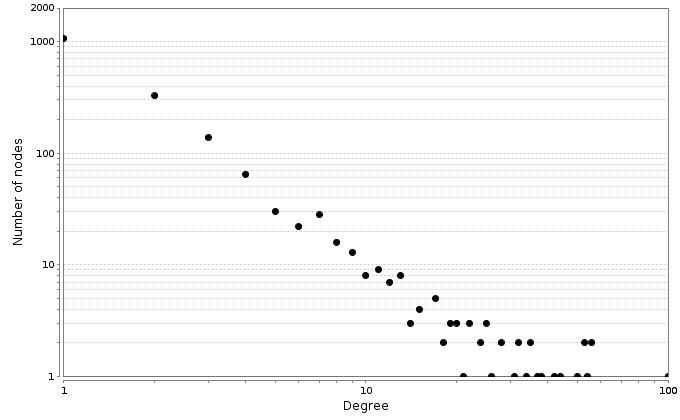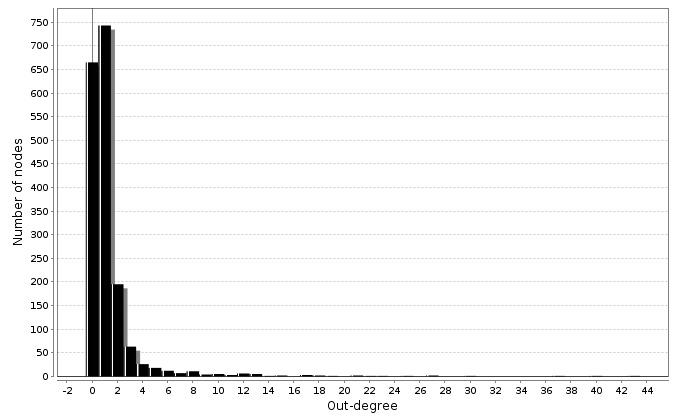博文
发育系统生物学与复杂网络视角 系列 (1)
||
发育系统生物学与复杂网络视角 系列 (1)
Why NOT3 is important and conserved for heart function
---- A Network View
Yong Peng
In this paper [1], their genome-wide screen for candidate heart genes and in silico analyses provides a first attempt at a global roadmap of essential imolecular components and key pathways potentially involved in heart function and cardiac failure. To extend their Drosophila results to mammalian systems, they used the power of data mining and bioinformatics at a global systems level, and constructed a global network of heart function. Based on this network, I will elucidate that why NOT3 is important and conserved for heart function. To visualize and analysis the network, I used the software Cytoscape [2-5].
The global network of heart function contains 1957 nodes, 2558 edges and 64 connected subnetworks. The largest connected subnetwork of this network contains 1783 nodes and 2447 edges, and it includes NOT3 (Figure 1). In the largest connected subnetwork, the NOT3 has 13 neighbors (Figure 2), that is to say, the degree of the NOT3 node is 13 (out-degree is 12, in-degree is 1). The degree of the NOT3 node is not very large, degrees of 57 nodes are greater than 13 and degrees of 8 nodes are equal to 13 (Figure 3). And out-degrees of 30 nodes are no less than 12 (Figure 4). So, for the degree, the NOT3 node is not special, but why it is important and why it must be conserved for heart function?
Maybe because the NOT3 node has 3 neighbors with very large degree. The degrees of the 3 neighbors, NOT4, NOT1 and Hsp83, are 27, 32 and 54, respectively. If the NOT3 was changed, its all neighbors must be changed simultaneously for keeping interactions between them. But the 3 neighbors with very large degree are very difficult for any change. So NOT3 can not change during evolution. NOT3 is very important to keep that the network is connected, maybe this is another reason.

Figure 1. The largest connected subnetwork of the global network of
heart function (yellow node is NOT3)

Figure 2. NOT3 and its 13 neighbors in the largest connected subnetwork

Figure 3. Node degree distribution of the largest connected subnetwork

Figure 4. Node out-degree distribution of the largest connected subnetwork
REFERENCES
[1] Neely G. G., Kuba K., Cammarato A., et al. (2010). A global in vivo Drosophila
RNAi screen identifies NOT3 as a conserved regulator of heart function. Cell, 141(1),
142-153.
[2] Shannon P., Markiel A., Ozier O., et al. (2003). Cytoscape: a software
environment for integrated models of biomolecular interaction networks. Genome
research, 13(11), 2498-2504.
[3] Cline M. S., Smoot M., Cerami E., et al. (2007). Integration of biological networks
and gene expression data using Cytoscape. Nature protocols, 2(10), 2366-2382.
[4] Smoot M. E., Ono K., Ruscheinski J., et al. (2011). Cytoscape 2.8: new features
for data integration and network visualization. Bioinformatics, 27(3), 431-432.
[5] Saito R., Smoot M. E., Ono K., et al. (2012). A travel guide to Cytoscape plugins.
Nature methods, 9(11), 1069-1076.
是我的Developmental Biology track课程作业之一。
https://blog.sciencenet.cn/blog-830496-753898.html
上一篇:Bowtie和Bowtie 2的安装和使用详解(step by step)
下一篇:发育系统生物学与复杂网络视角 系列 (2)